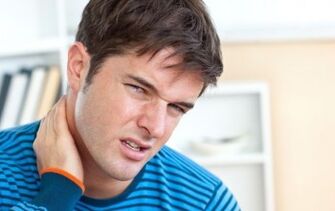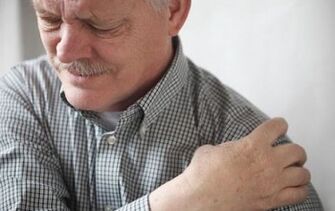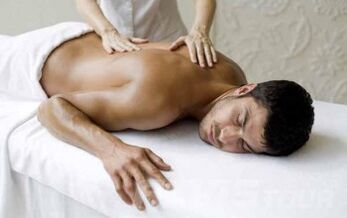
The sedentary lifestyle, office work, lack of adequate physical activity and the peculiarities of modern nutrition lead to the spread of many of the diseases that are inherent in our urbanized society.
Among them, the leading role is rightly occupied by cervical osteochondrosis.
And all because of the weak muscular ligament and the fact that this 7 discs have more mobility than any other part of the spine, you get constant physical activity as you have to keep your head in the desired position, tilt and rotate all the time.
Causes of the disease
In the past, osteochondrosis was an adult disease and people who had lived for more than 40 years had suffered from it. But every year, the age limit for the disease decreases and "rejuvenates, " which has led to a predisposition to the disease in 18- to 20-year-olds.
The main causes of such pathologies are:
Violation of posture in adolescence.Young people now don’t want to control their posture, which leads to it being violated.
Overweight.The appearance of overweight increases the load on the spine.
Curvature of the back.The risk of osteochondrosis with curvature of the back increases.
Back injury.Back injury causes irreparable damage to any part of the spine.
Metabolic disease.There is also a high probability of developing osteochondrosis in metabolic disorders.
Hard physical work.Too hard physical work leaves indelible marks on the health of the spine in general and the neck region in particular.
Low physical fitness.The level of physical fitness also affects the condition of the spine, and the lower the spine.
Errors in performing complex exercises.Athletes may have problems with osteochondrosis during training with severe work errors.
Tension.The nervous tension of modern man and the constant stress in the cervical vertebrae also cause disorders.
Sedentary lifestyle.Sedentary lifestyle or inactivity greatly affects the vertebrae.
Past diseases. Osteochondrosis can develop after infections and hypothermia.
The disease is actually the result of muscle cramps that do not allow the cervical vertebrae to move easily, impairing the blood supply to the tissues while causing postural disturbances, resulting in dystrophic processes in the vertebrae themselves, e. g. and they begin to activate in the intervertebral discs, causing narrowing of the intervertebral holes and pinching of the nerve roots.

Main symptoms
The symptoms of cervical osteochondrosis are slightly different from other parts of the spine.
The tighter fit of the vertebrae leads to one of the minimal lesions compressing or displacing any nerve or vessel and also compressing the spinal cord.
For this reason, the violation of the functions of the body can be recorded: disturbance of the sensitivity of the skin, dizziness.
Clinical manifestations:
- Pain in the neck and shoulders that extends to the back of the head, the area of the ears and eyes, and does not subside even at night.
- Pain in the upper extremities that is exacerbated by exertion.
- Decreased sensitivity of the upper extremities, muscle weakness and difficulty in movement.
- In the morning the neck muscles tense and the head turns tight, the neck seems to be "rested".
- Turning or tilting of the head, feeling of pain in the neck.
- Occasionally, the limbs become numb and a burning or tingling sensation occurs.
- Occasionally there is unpleasant throbbing pain in the neck and neck.
- Violent head movements can cause blurred vision, dizziness, or fainting.
- Occurrence of tinnitus.
- Impaired visual acuity and hearing.
- There is numbness in the tongue.
- There are heartaches that do not respond to trinitroglycerin, but their intensity changes due to changes in body position.
- Headaches occur in the occiput, crown, and temple.
- In the neck region, so-called "milling" occurs, i. e. , the connective tissues grow.
Signs of cervical osteochondrosis
Cervicalgia (pain and muscle tension in the neck)

Cervicalgia is a pain syndrome characterized by pain and tension in the neck muscles, loss of mobility in the neck region, dizziness, impaired vision, and autonomic dysfunction.
The pain can be tingling, throbbing, and "shooting. "
You may want to do the slightest movement, sneezing or coughing - as soon as the muscle tension is given by pain.
There are also problems with turning the head or tilting it to the side when the patient has to do this with their whole body.
In addition, patients experience dizziness, occipital pain, tinnitus, numbness in the back of the head, and numbness in the hands.
The reasons for its occurrence may be:
- Hypothermia.
- Uncomfortable position of the head during sleep.
- Sedentary work that forces you to keep your head in an awkward position for a long time.
- Physical activity that leads to muscle tension in the neck area, including sports training in the gym.
- Injuries to the cervical spine.
- Tissue infections or tumors.
Pain in the back of the head, shoulders, and arms, as well as pain when turning the head, indicates the presence of an initial stage of a chronic disease, such as osteochondrosis.
Cervicocranalgia or posterior neck symptom (pain in the cervico-occipital region)

Cervicocranialgia is pain in the cervical occipital region, the occurrence of which is closely related to damage to the cervical spine, degenerative lesion, or inflammation.
Its spread often reaches the frontotemporal lobe, shoulder, and arm, and can be unilateral. In this case, the parties do not change.
The intensity of this pain is moderate, with an increase in head movements, palpation of the neck and occipital muscles, and prolonged discomfort in the head.
Usually, these pains can be caused by cervical spine osteoarthritis or osteochondrosis.
In these cases, the pain may push, shoot, or throb. Slight movement of the head, cough, muscle tension may cause pain to worsen.
The main complaints that patients complain about are:
- Inability to turn and tilt the head, for which the whole body must be moved.
- Numbness of the occipital region and hands.
- Noise in the ear.
- Dizziness.
- Pain in the occipital area, etc.
Cervicobrachialgia or shoulder-to-shoulder syndrome

Cervicobrachialgia is characterized by numbness of the hands and a deep fracture and often stinging pain in the hand or forearm, as well as a feeling of weakness in the upper extremities.
This usually happens at night.
The disease can also develop reflexively, affecting predominantly heavy manual workers and 9 out of 10 women.
In this case, vegetative-vascular, muscular-tonic and neurodystrophic manifestations are observed.
Reflex syndromes are characterized by the presence of muscle tonic reactions, such as muscle cramps.
Treatment

Treatment should be comprehensive.
At the same time, the principles of both pharmacological and non-pharmacological treatment must be applied, not forgetting the prevention of possible diseases.
By medication is meant the use of drugs that reduce pain and inflammation and improve cerebral circulation.
If there is a pathology in the form of muscle tension, it is recommended to take relaxing drugs and vitamin-mineral complexes in therapeutic doses.
Physiotherapy methods play an important role in the treatment:
- aquatic processes.
- Paraffin applications.
- Electrophoresis.
- Magnetotherapy.
The widespread use of alternative therapies will also help combat the disease. But nonetheless, physiotherapy remains the most effective means of treatment.
Prevention
In order for you to get around all the problems with osteochondrosis, you need to remember all the reasons that make the disease happen.
Since the main reason is a sedentary lifestyle, don’t forget about morning exercises and walking, and be sure to include exercises with your neck muscles in your daily gymnastics. And keep in mind that circular movements of your head can lead to neck injuries, so don’t include them in your exercises.
And keep in mind that preventive screening of school-age children by an orthopedist is mandatory.
Build a strong muscular corset, be sporty.
Eat foods that can replenish your body with minerals such as calcium and magnesium, vitamins.



















